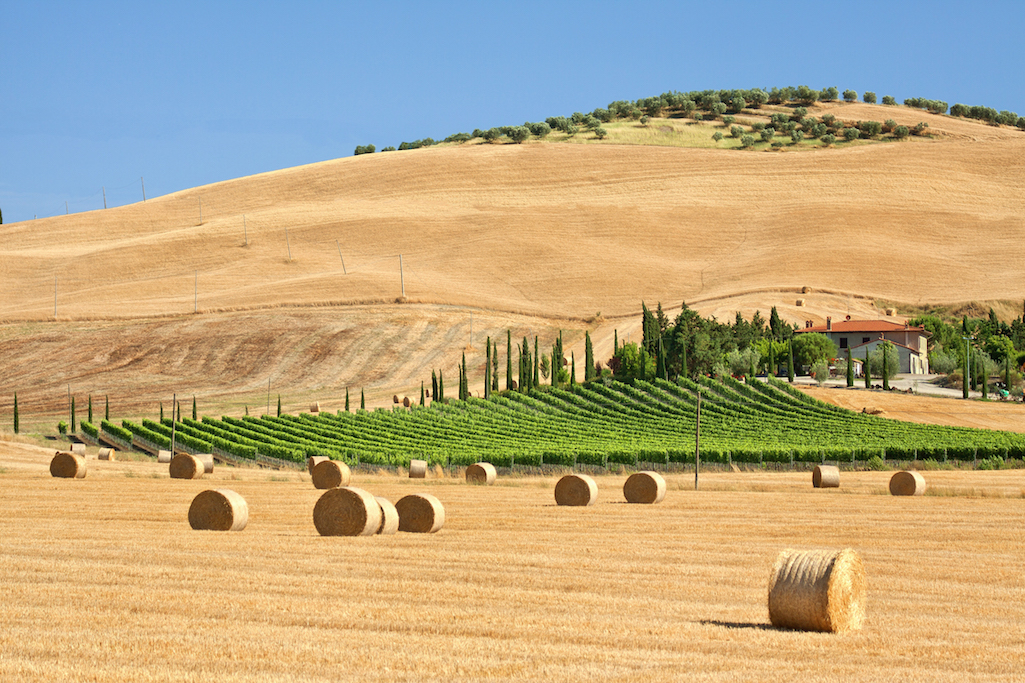Welcome to the future
Bioeconomy and its legitimacy might be a well-worn discussion, however, the serious perspectives of the future needs to be dealt with.

The bleak forecast from experts is, that world food demand will increase by 70% before 2050 when the population reaches 9.1 billion - 34 percent higher than today. This, together with increased use of biomass for non-food including biofuels requires an increase in biomass production and a more clever use of biomass.
At the same time the available agricultural land area is decreasing as a result of soil degradation and expansion of residential areas. Furthermore, climate change increasingly affects agricultural productivity and there is a continued need for reducing agriculture's environmental impact.
This means a number of opposing challenges for the future food production. Challenges that the Bioeconomy claim to solve.
Bioeconomy
The European Commission writes about Bioeconomy:
"The Bioeconomy offers Europe a unique opportunity to address complex inter-connected challenges, while achieving economic growth. It can assist Europe in making the transition to a more resource efficient society that relies more strongly on renewable biological resources to satisfy consumers' needs, industry demand and tackle climate change.”
”It has become a well-worn phrase, yet, with a serious perspective," says Niels Halberg, director of the DCA – Danish Centre for Food and Agriculture - and ICROFS – International Centre for Research in Organic Food Systems. He is one of the scientific coordinators of the new joint programme FACCE SURPLUS.
In Europe and most other countries it is not an option to convert forests and nature areas into farm land. As the area that can be used for food production is dwindling, food production must be intensified on the remaining farm land.
"On the one hand, we need to increase and intensify the agricultural production, on the other hand agriculture needs to further reduce the negative environmental impact and with a larger respect for natural capital. It is a huge challenge that needs to be addressed at a transnational level across Europe," he says.
Likewise, society needs to reduce pollutants and greenhouse gas emissions deriving from the use of fossil energy.
One of the solutions is to increase the use of renewable biomass that can substitute the use of fossil raw materials in the production of a vast variety of products and energy resources.
“One idea is to replace imported soy-based proteins used for pigs and poultry. If we can extract high quality proteins from green perennial crops such as grass clover or alfalfa (lucerne) and make it suitable for pigs and poultry it could be an advantage for the industry. And we also need high quality proteins urgently in the organic prk, chicken and egg production,” Niels Halberg says.
Dr. Katharina Helming from Leibniz Centre for Agricultural Landscape Research (ZALF) in Müncheberg recently agreed to take the role of Chair of the International Evaluation Committee (IEC). She agrees with Niels Halberg on the bioeconomy strategy but points specifically to the one and foremost purpose of bioeconomy: The provision of food and fibre.
A three step solution
"Since land for biomass production is scarce, intensified production takes the risk of reinforced soil degradation and deterioration of ecosystem services. Therefore, sustainability considerations pose three key requirements to the reinforced production and utilization of biomass," Katharina Helming says.
The first is to develop agricultural management systems that minimize trade-offs with ecosystem services, biodiversity, soil quality and resources use. The second is to fully exploit the potentials of the so called circular economy for the biomass value chain, which implies minimization and reutilization of waste and developing cascading utilization of biomass products and by-products. This also includes integrated food and non-food biomass production. The third is to develop innovative bio-technologies and industrial processes that break up the dependency on conventional fossil fuel utilization.
"FACCE SURPLUS responds to all three requirements in setting up a program that is meant to leverage national research into joint innovations in biomass production and utilization along the entire value chain. The program extends from primary production to innovative bio-refinery systems and into the development of new markets for bio-based products. Though wide in its scope, the program is clear in its orientation towards the principles of sustainable development, which means that all innovations have to be evaluated, in an ex-ante mode, against their impacts on social, economic and environmental development targets," she explains.
FACCE SURPLUS
Beginning from march 4th, when the deadline for applications is reached, Katharina Helming will along with a broad range of other evaluators begin to look at the project applications for FACCE SURPLUS. And she expects quite a bit from the applications.
"This ambition requires a systemic approach, combining field and laboratory research with modelling, scenario techniques and pilot application. Project consortia will have to operate in an interdisciplinary and transdisciplinary mode and utilize principles of modern transformation management," Katharina Helming says and continues:
"Combined with the ongoing FACCE program, FACCE SURPLUS will succeed in creating a European school of thought and innovation on sustainable biomass production and utilization that may serve as role model at national and international levels."
Scientific leader Niels Halberg also puts great expectations into the new ERA-NET Cofund, which in his view will be able to do good to both organic and conventional farming.
Sustainable intensification, climate smart agriculture… It goes by many names and do, according to Niels Halberg, also have relevance for organic agriculture:
“This development may benefit both organic and non-organic agricultural systems. If we succeed in developing these systems we can improve the recycling of nutrients and improve the soil fertility,” he says and finishes:
“The idea of FACCE SURPLUS is to support innovations neccessary in primary production, biorefineries and value chains at the same time, and hence allow this transformation."
